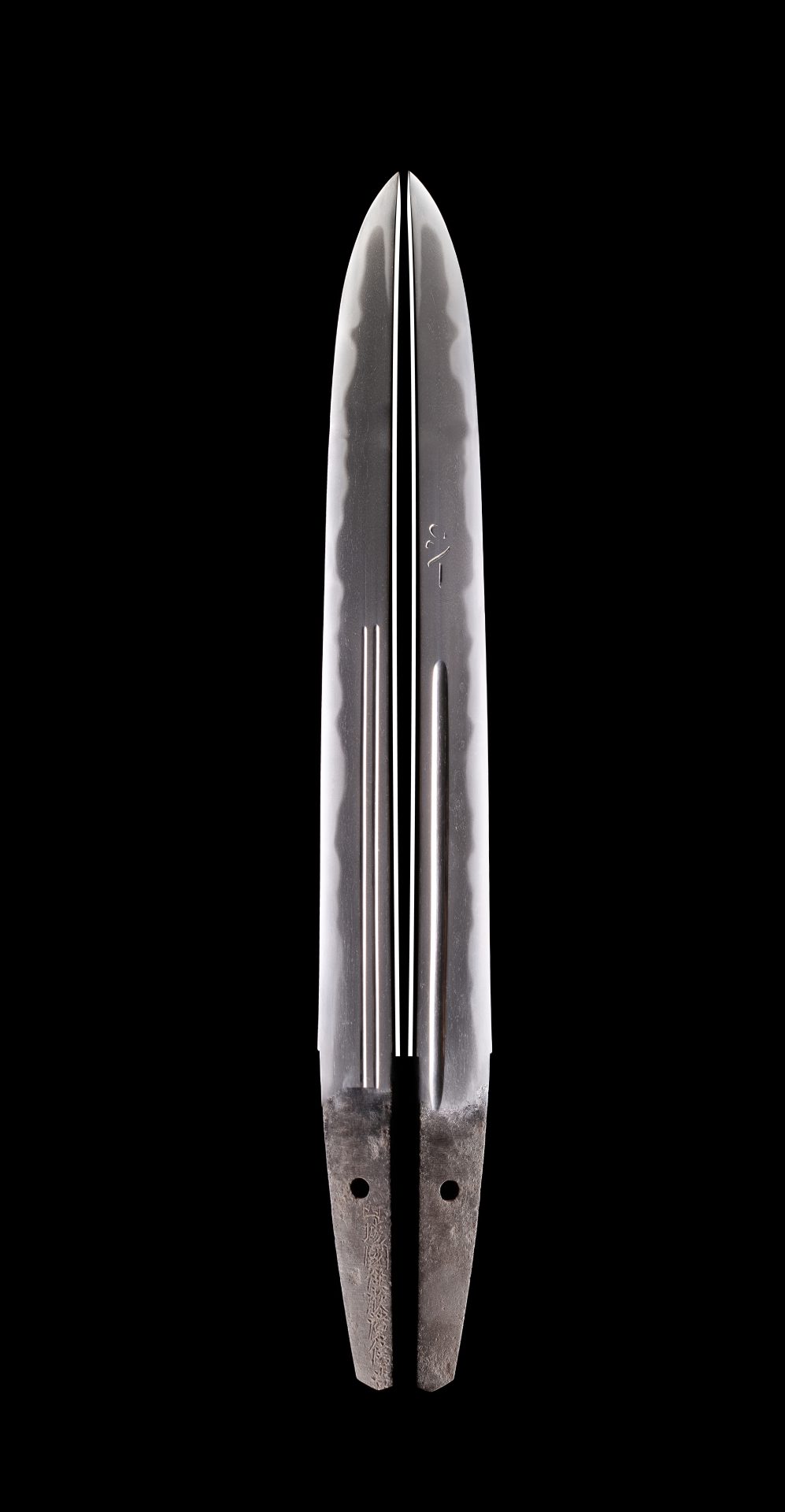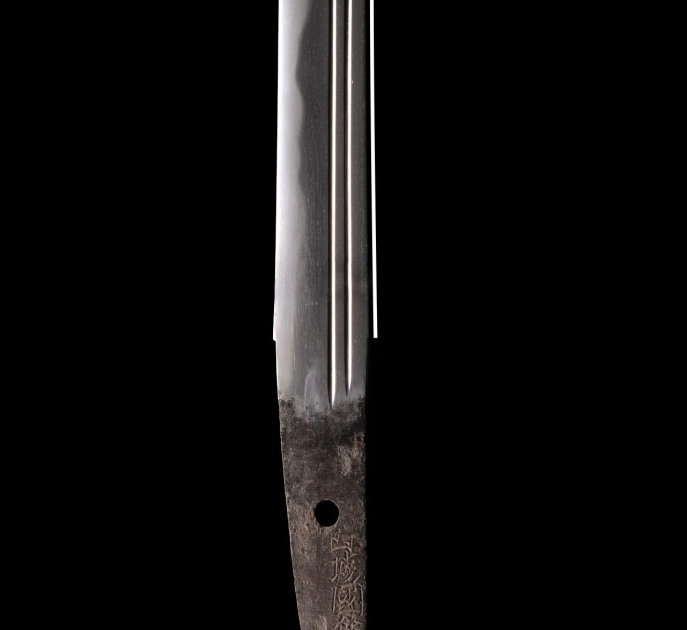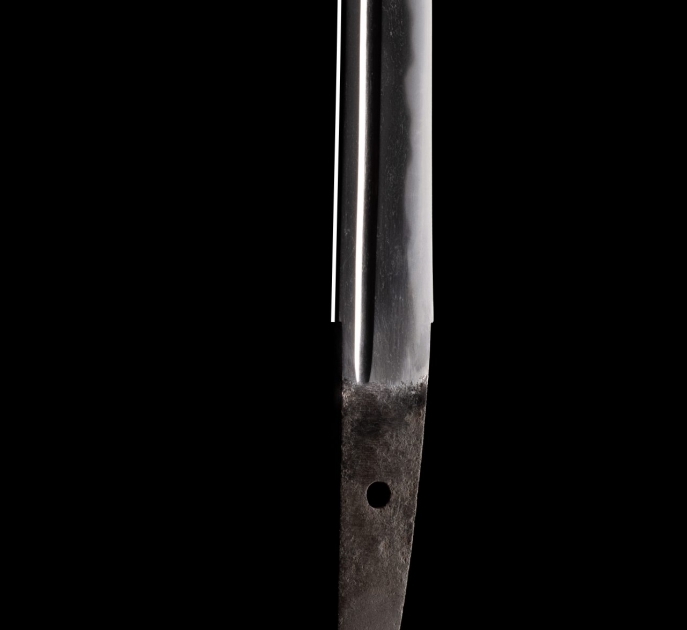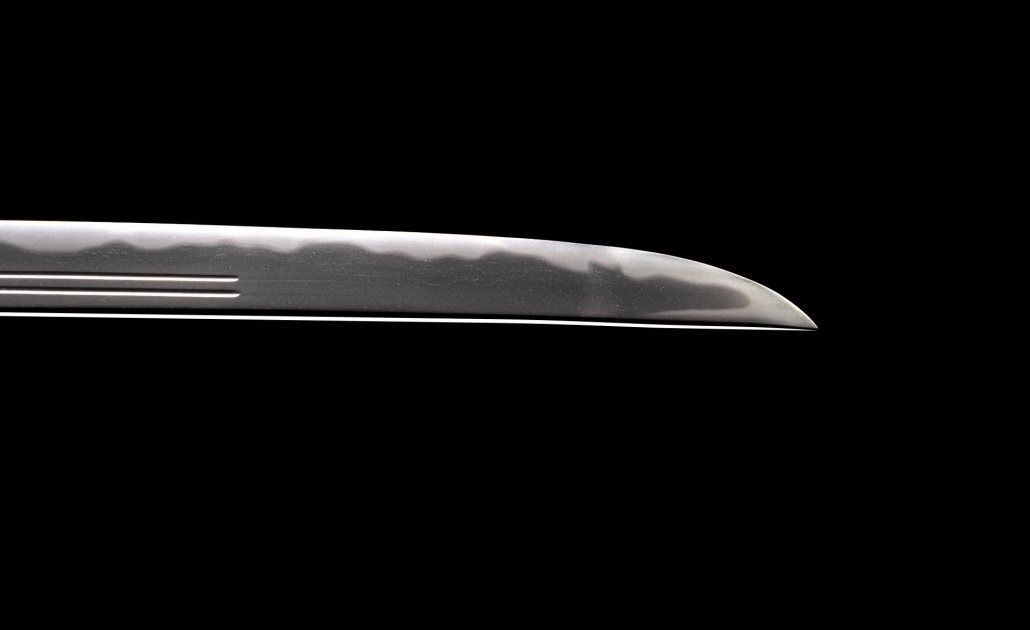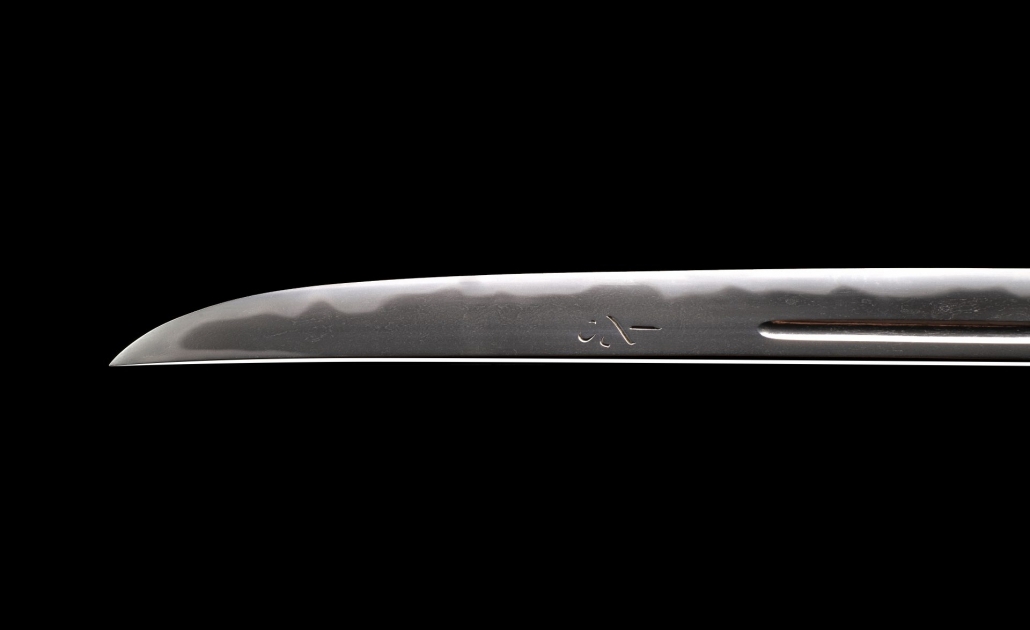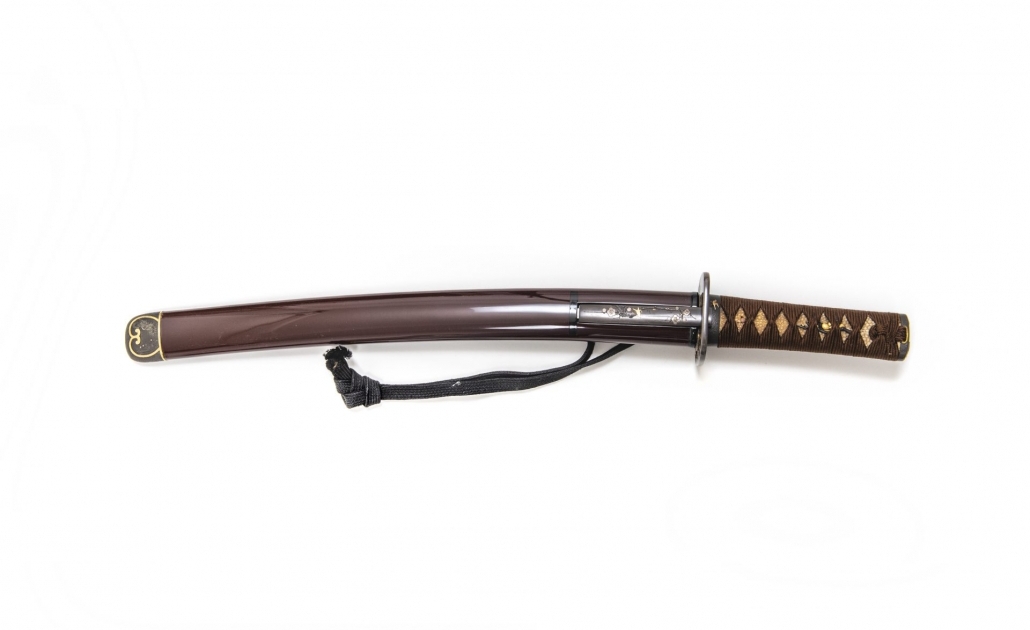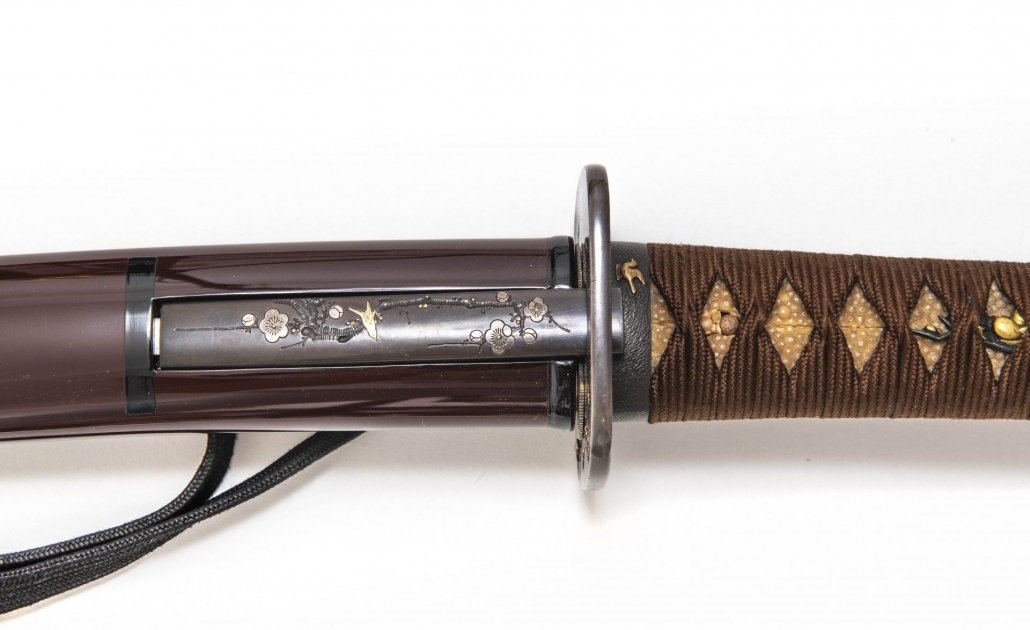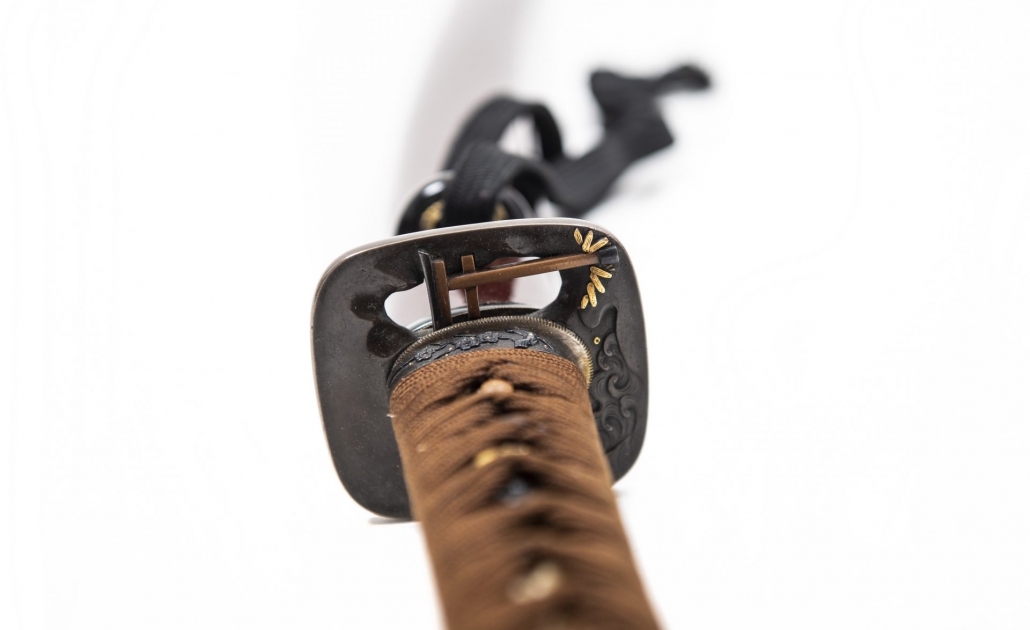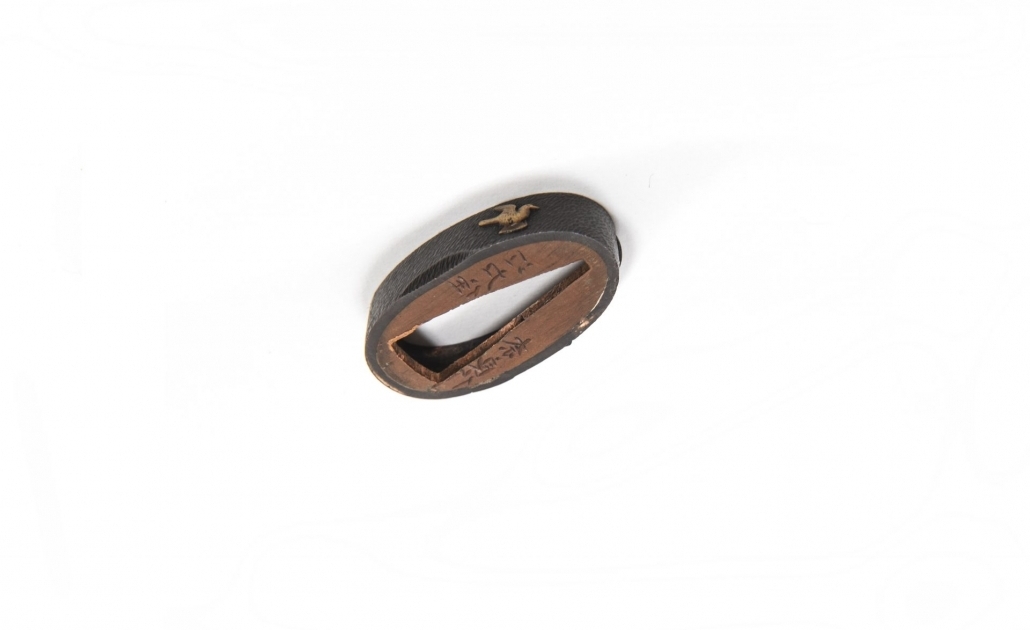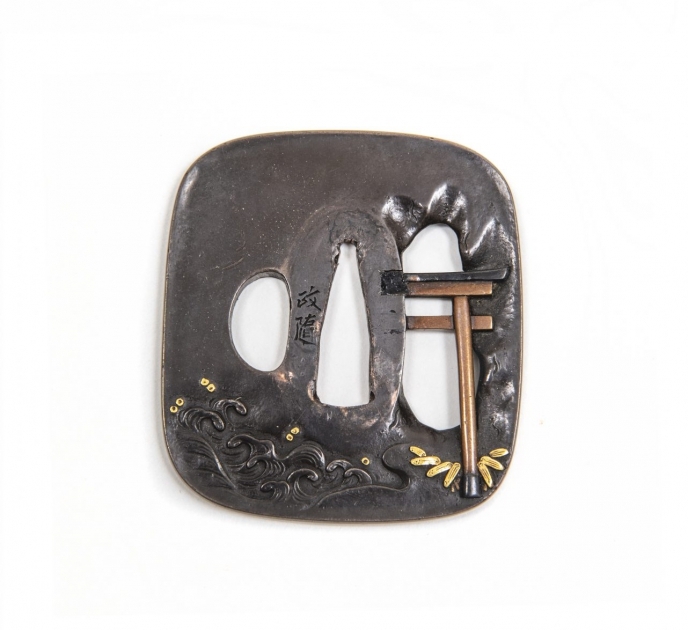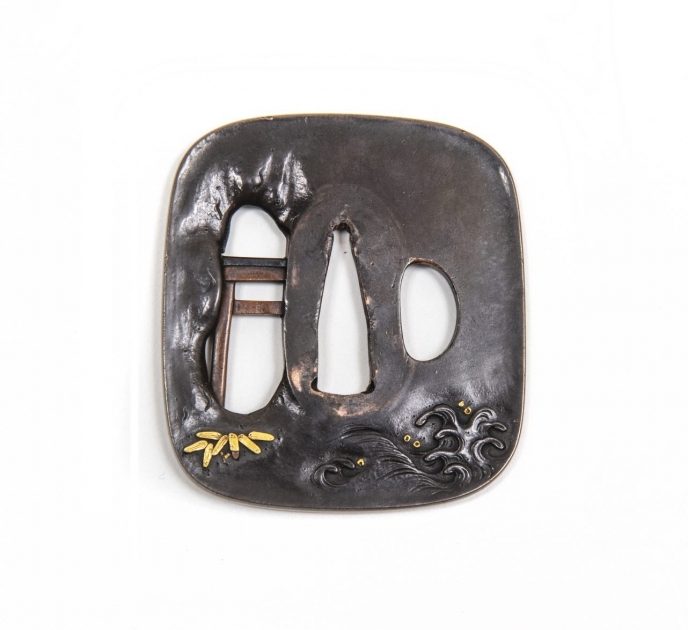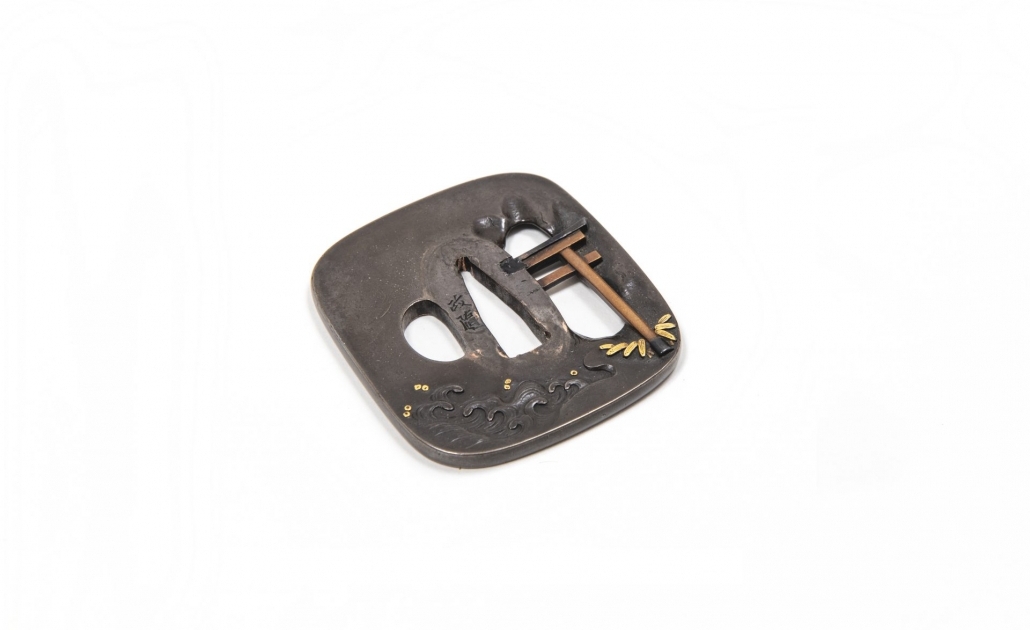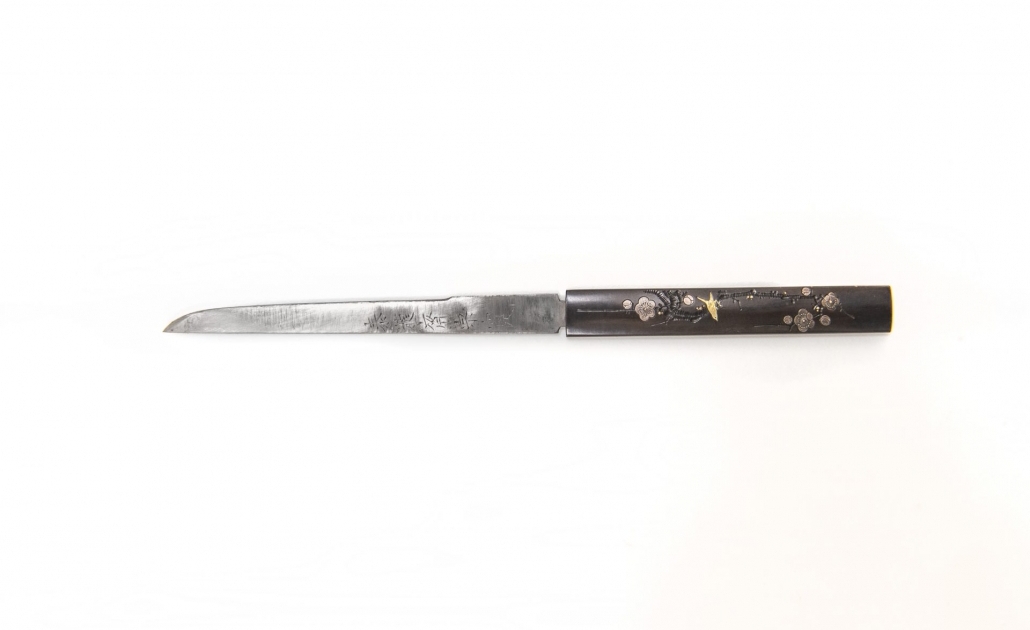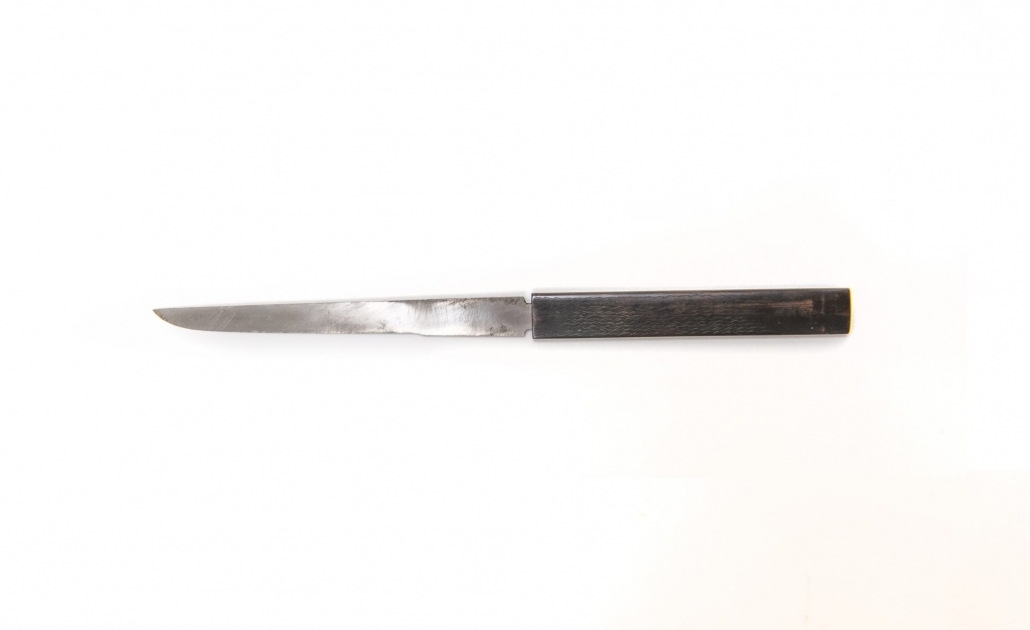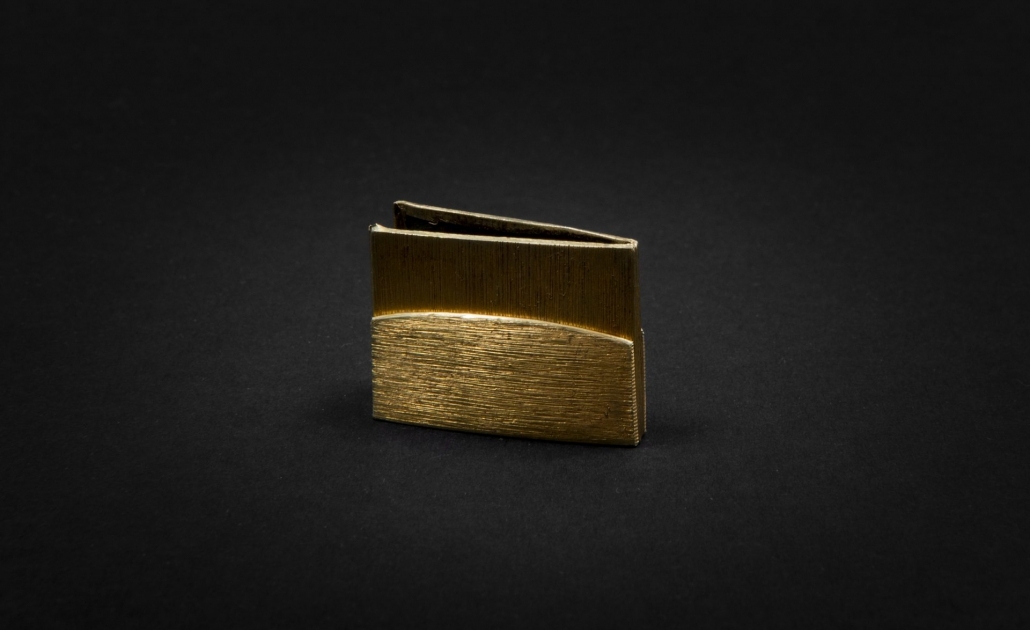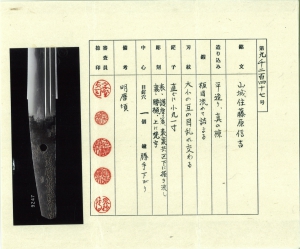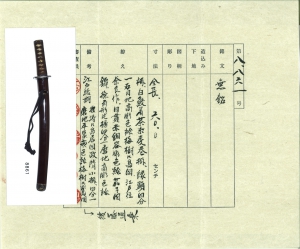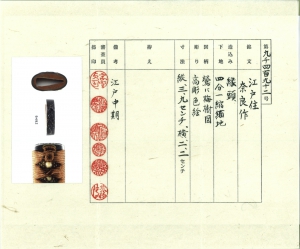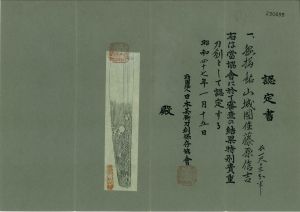Dimensions :
Nagasa : 31.4 cm
Sori : 0,20 cm
Moto-haba : 3.0 cm
Moto-kasane : 0.61 cm
Saki-kasane : 0.50 cm
Nakago : Ubu
Certificate – Origami
Wakizashi – NTHK-NPO Kanteisho
“Important work”
Koshirae – NTHK-NPO Kanteisho
“ Important work”
Fushigashira – NTHK-NPO Kanteisho
“ Important work”
Wakizashi – NBTHK Tokubetsu Kichō
“Especially precious”
Wakizashi :
Sugata : Hira-zukuri, mitsu-mune
Kitae : Itame-Nagare, Chikei
Hamon : Gunome midare, sunagashi, ashi
Boshi : Sugu, ko-maru with long kaeri
Horimono / Hi : Omote Gomabashi, ura koshi-bi, bonji
Nakago : Ubu, katte-sagari
Koshirae :
Period : Late Edo
Saya : Cha-urushinuri-saya (brown lacquer scabbard)
Kozuka : Nightingale in plum tree motif, shibuichi, hira-zōgan inlay, iroe colours, signed Gotō Tsūjō (後藤通乗)
Tsuba : Torii shrine gateway motif, shibuichi, takabori, iroe. Signed Shōzui (政隋)
Fushigashira : Takabori relief, shibuichi, ishime finish, iroe colours. Signed Edo-jū Nara saku (江戶住奈良作)
Menuki : Eggplant motif, shakudō, katachibori
Swordsmith and school :
Fujiwara Nobuyoshi (1st gen) of his real name Takai Kinzaburō, is a swordsmith belonging to the famous Mishina school of Kyōto in Yamashiro province. Founded by Kanemichi of Seki in Mino province at the late Muromachi period (1467-1573), this school played an important role during the shintō period. From this tradition were born several leading smiths, such as Iga no Kami Kanemichi (2nd gen) and Tamba no Kami Yoshimichi, who is known to be the creator of the famous sudare-ba hamon. Their influences spread until the end of the Edo period.
According to several sources, Shodai Nobuyoshi worked at Kyōto and then at Ōsaka between the Shōhō and Kanbun era (1644-1672). He began his signed works with the clan name “Fujiwara” then “Minamoto”years later. It is also said that he practiced his art with his brother Echizen no Kami Nobuyoshi for a while. This smith is also known for his excellent mastery of the gunome and suguha tempering with a thick and brilliant nioiguchi. Many of his swords also include an imperial emblem “kiku-mon”.

